Fujitsu Primergy BX400 S1 review
Fujitsu's new Primergy BX400 S1 blade server is a complete data centre on wheels for SMBs. However, HP sells a very similar system, the c3000 Shorty. Is the new Primergy a match for the Shorty? Dave Mitchell finds out in our exclusive review.
It's taken a long time for Fujitsu to respond to HP’s c3000 but the wait looks worthwhile. Although Fujitsu's server blade choices aren’t as extensive as HP’s, the BX400 S1 is equally well built, just as easily managed and its very low operational noise levels makes it highly suited to life in the office.

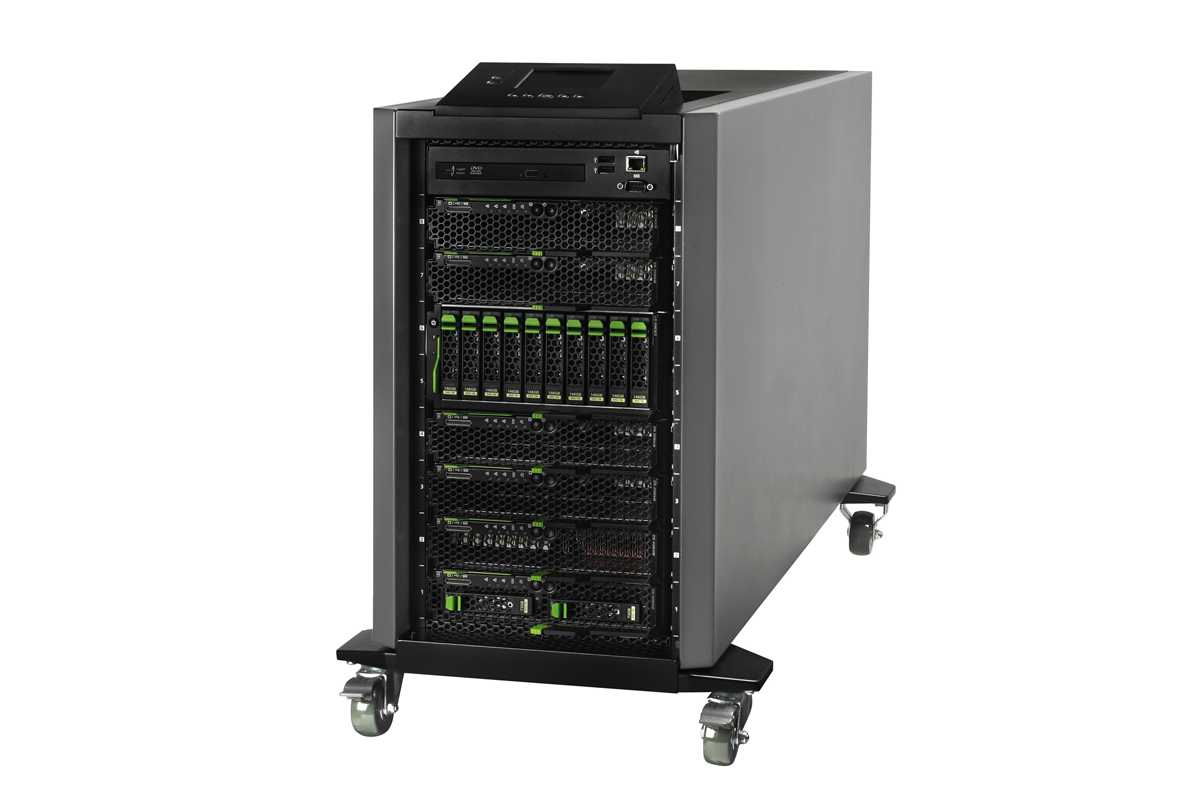
The Fujitsu Primergy BX400 S1
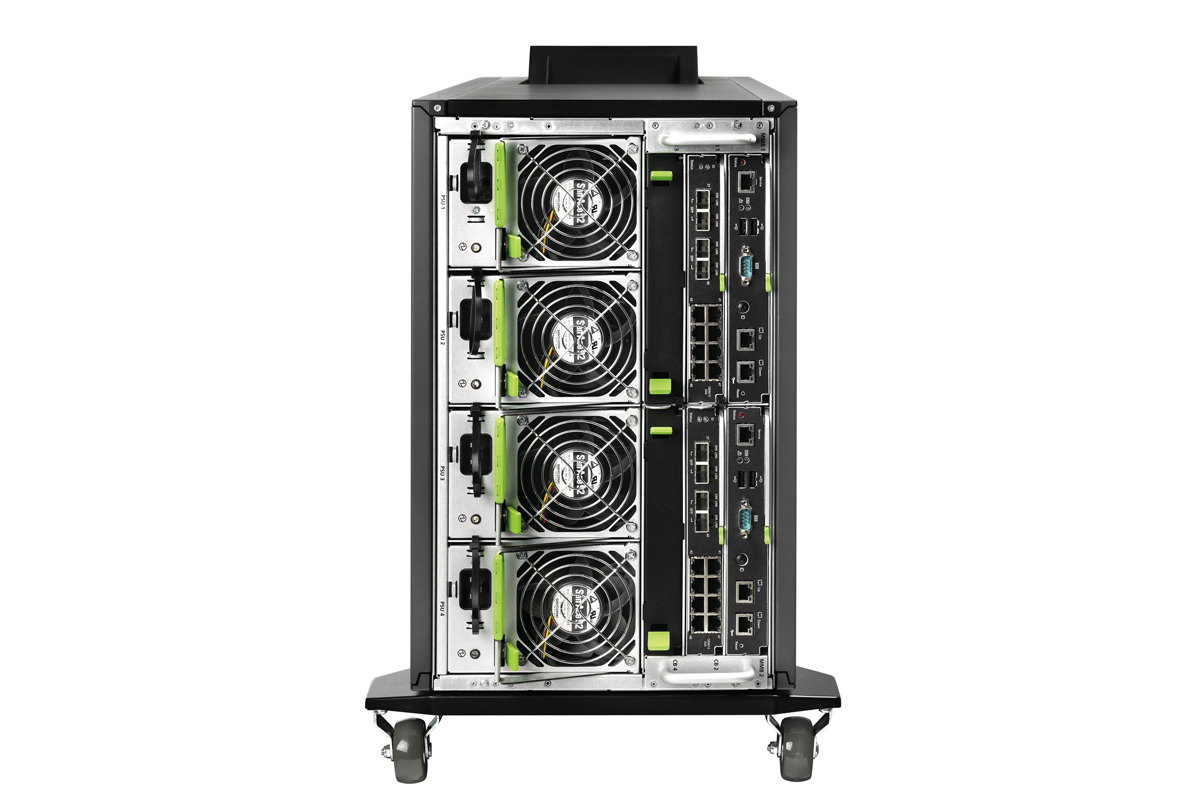
The back of the Fujitsu Primergy BX400 S1
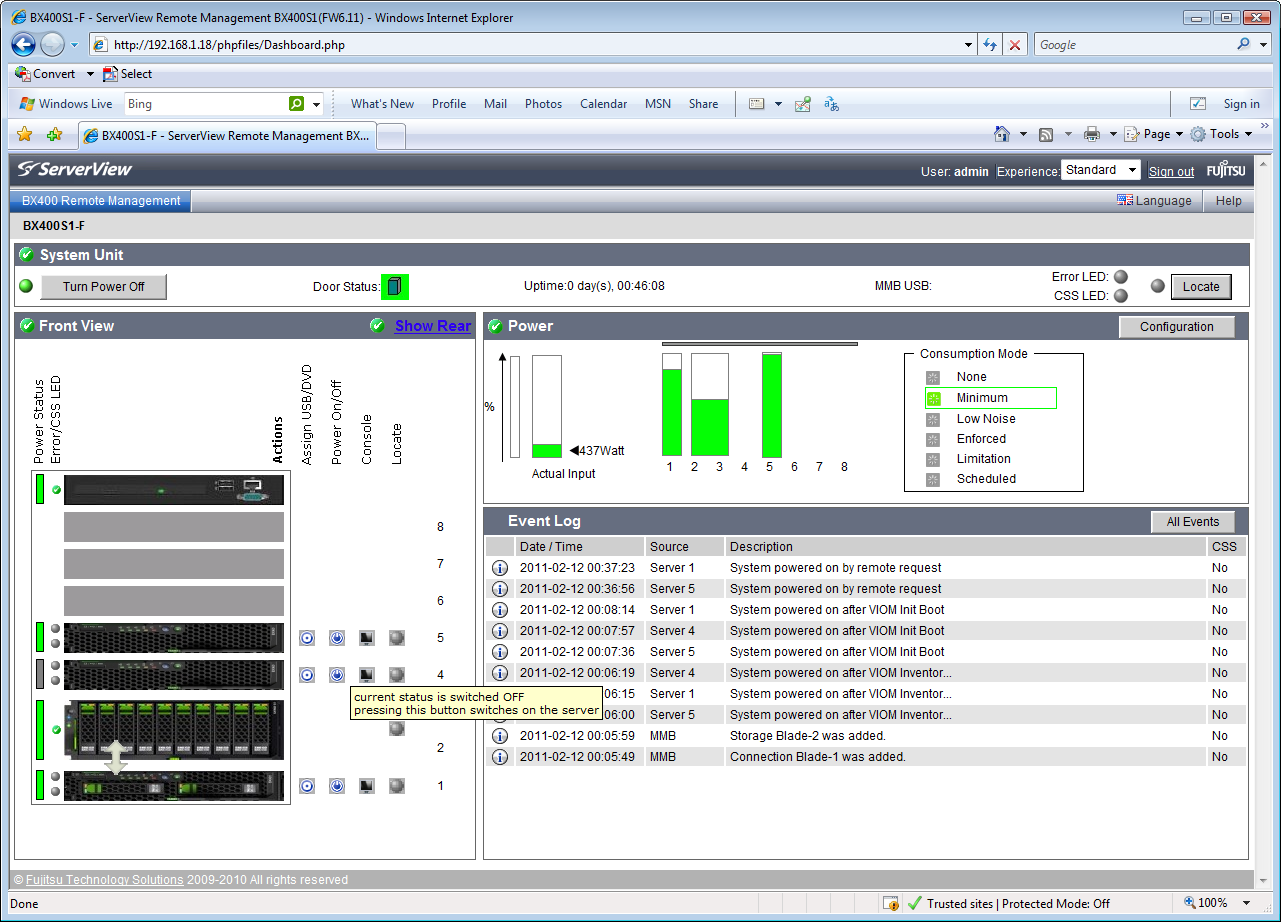
The standard view on the management Dashboard provides a complete overview of all installed blades and their power consumptio
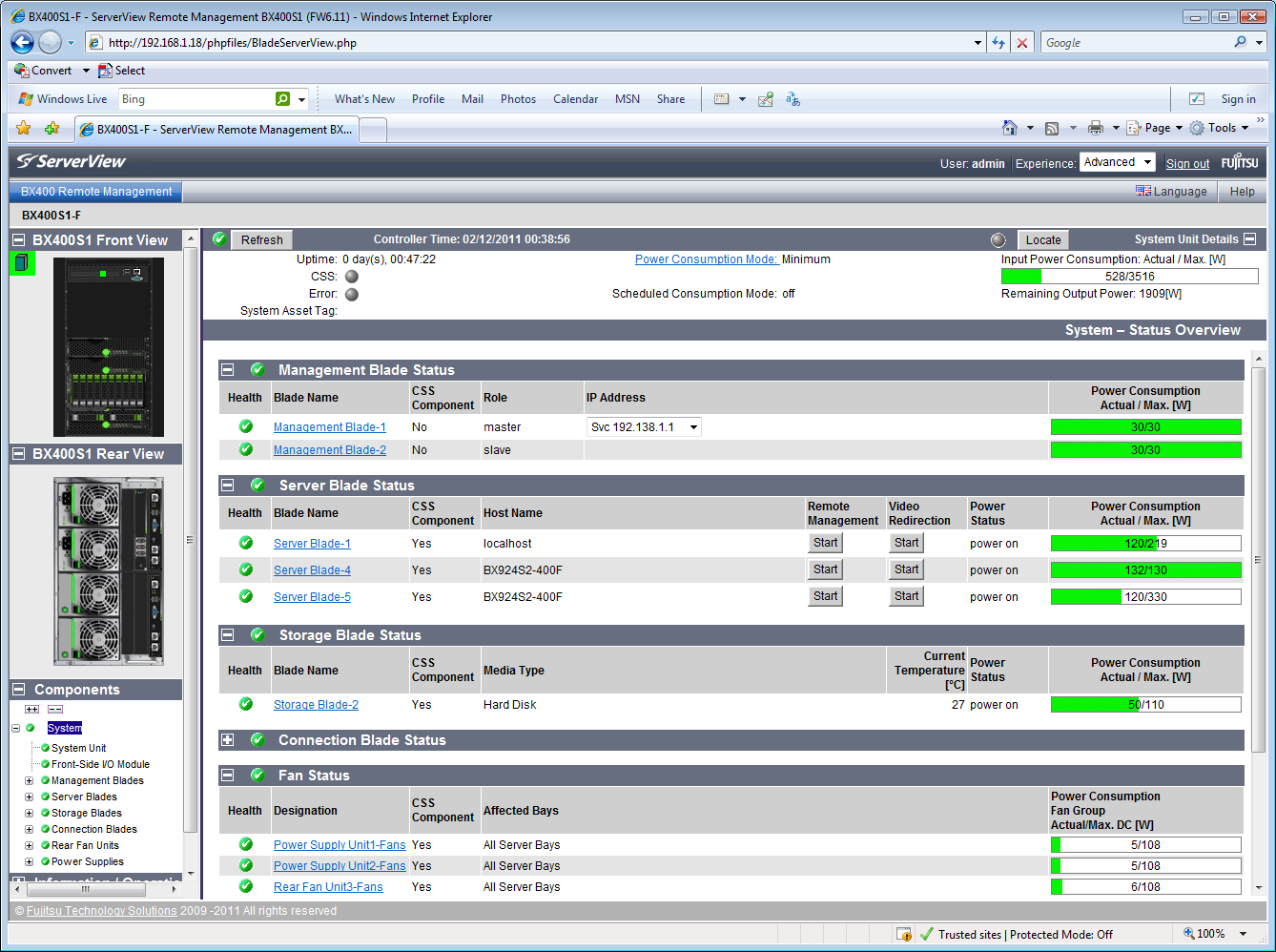
The Dashboard’s advanced view provides impressive levels of information about every component in the chassis.
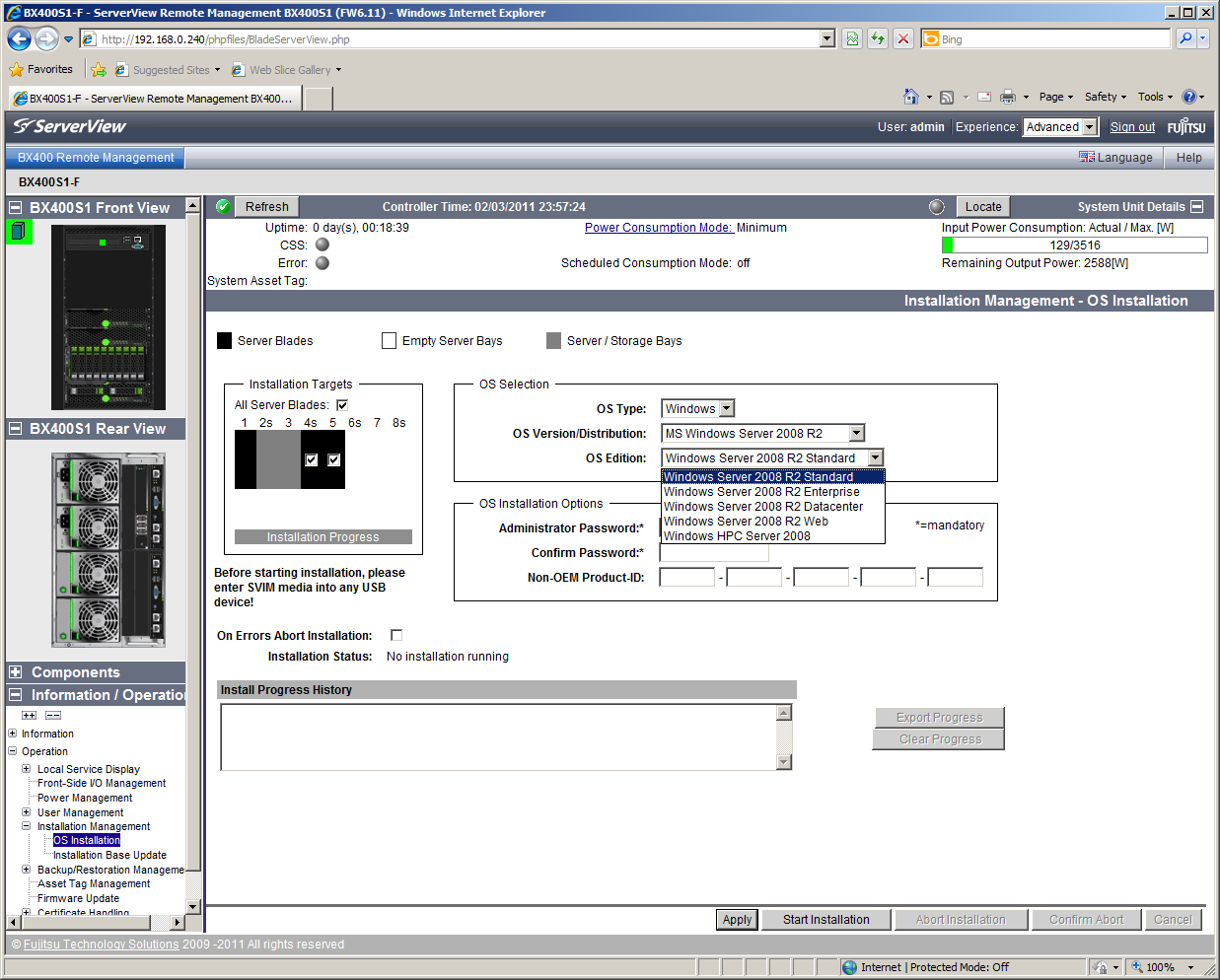
Fujitsu has OS installation on multiple blades nicely streamlined which makes deployment a swift process.
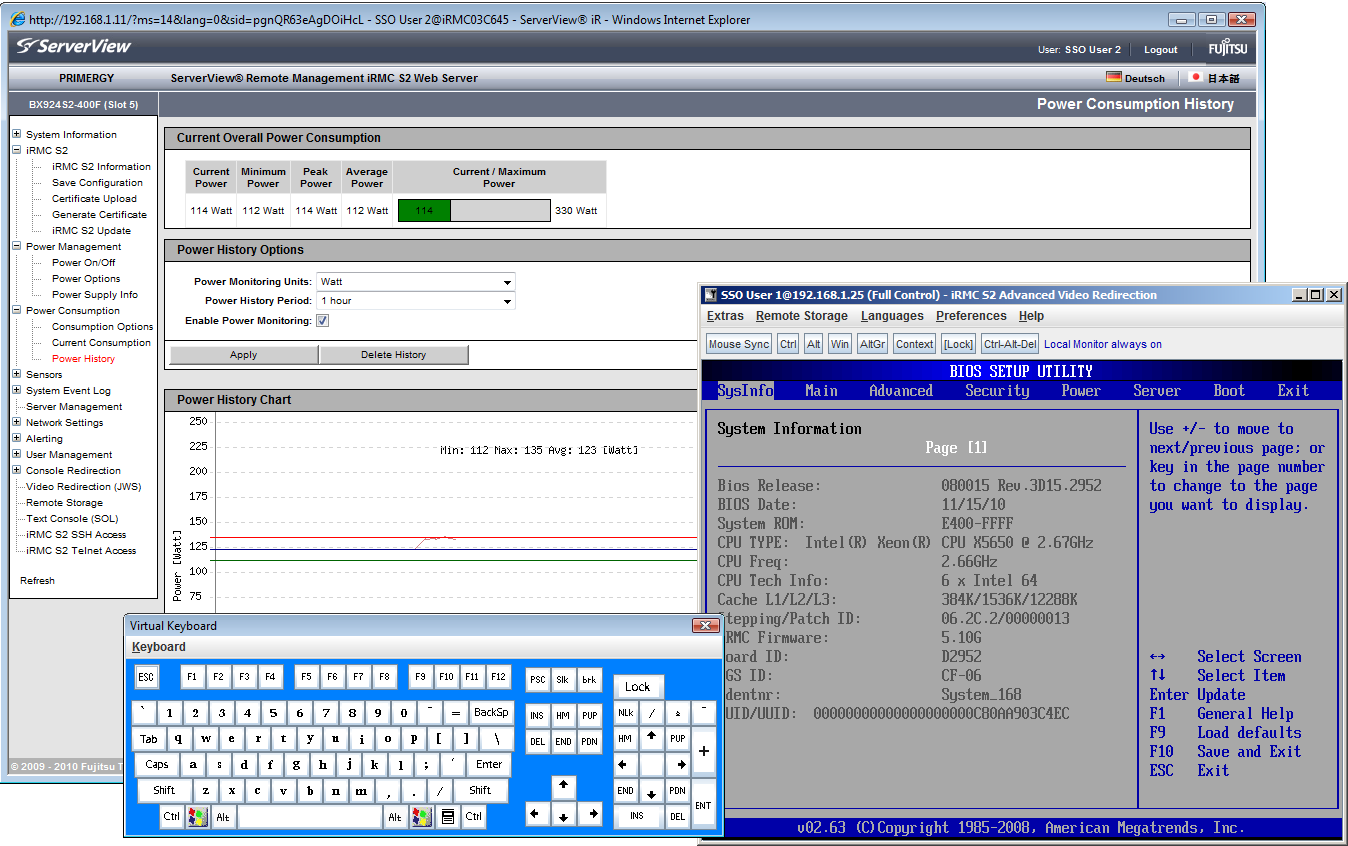
The Dashboard provides direct access to each blade’s iRMC2 controller and full remote control.
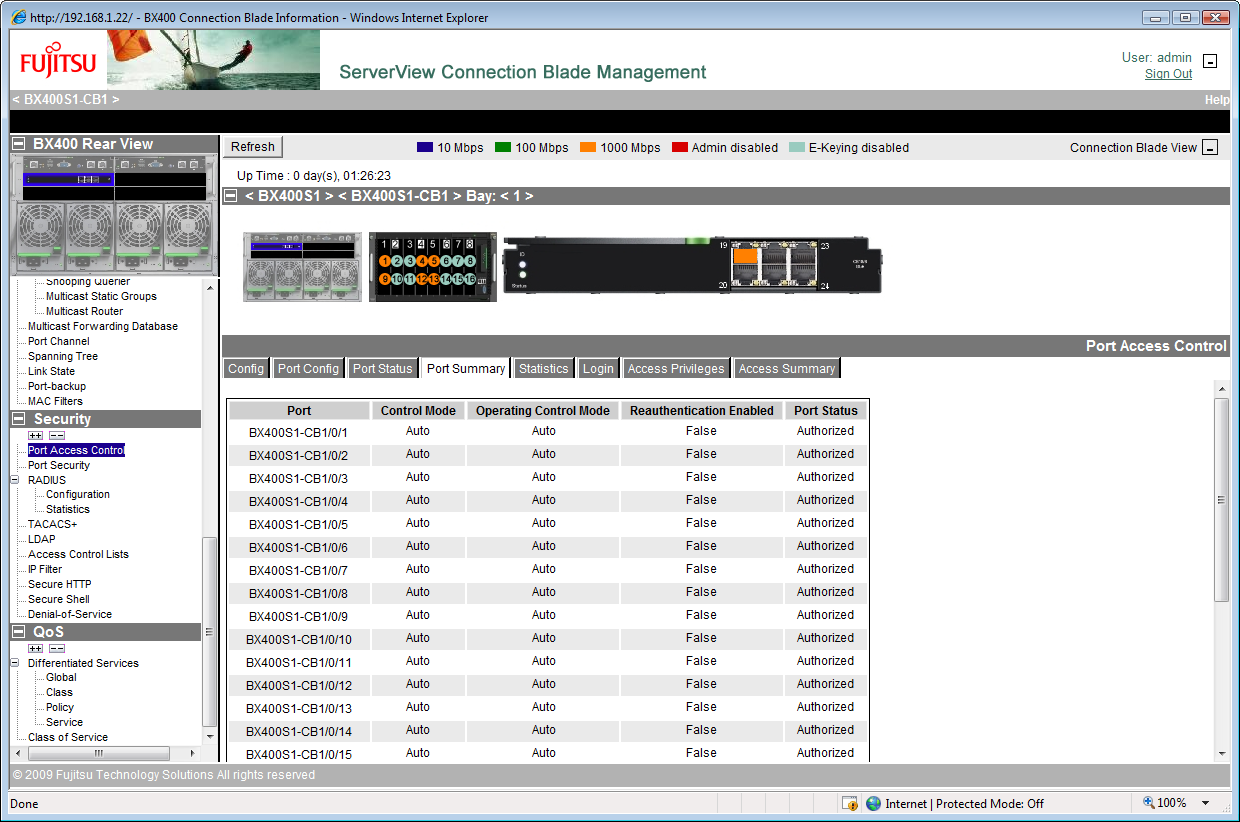
All switch blades have their own web browser management console which can be fired up from the Dashboard.
Blade systems represent one of the fastest growing sectors in the global server market, but most are way beyond the financial means of SMBs. HP spotted this gap a while ago and launched its BladeSystem c3000 Shorty' to fill it. Fujitsu now follows suit with its new Primergy BX400 S1.

The BX400 S1 targets SMBs and remote offices that want to amalgamate all their IT services in a single, low maintenance system that's easy to deploy and manage. It has plenty of expansion potential and is designed to work in normal office environments without the need for extra air conditioning or cooling.
Physically, the BX400 S1 is very similar to the c3000 - both are 6U high and built like tanks. The eight half-width server blade slots are accessed from the front and are arranged horizontally. The c3000 has vertical slots and accepts four full-height, eight half-height blades or a mixture of both.
The colour LCD display and control pad on the top panel are used to view the health status of the entire system and fire up a base installation wizard. This runs through chassis configuration, enabling management access and choosing a power management scheme.
The BX400 S1 supports up to four 1600W hot-plug supplies and each supply has an integral cooling fan. Noise levels are extremely low making so it's ideally suited to office deployments.
Server blade choices aren't as broad as HP's. Fujitsu has three Xeon-based server blades, whereas HP also has a number of AMD server options. The BX920 blade has two hot-swap SFF SAS/SATA disk bays at the front. To accommodate them the memory slot count has been reduced to nine so this model supports up to 144GB of DDR3 memory.
Get the ITPro daily newsletter
Sign up today and you will receive a free copy of our Future Focus 2025 report - the leading guidance on AI, cybersecurity and other IT challenges as per 700+ senior executives
Dave is an IT consultant and freelance journalist specialising in hands-on reviews of computer networking products covering all market sectors from small businesses to enterprises. Founder of Binary Testing Ltd – the UK’s premier independent network testing laboratory - Dave has over 45 years of experience in the IT industry.
Dave has produced many thousands of in-depth business networking product reviews from his lab which have been reproduced globally. Writing for ITPro and its sister title, PC Pro, he covers all areas of business IT infrastructure, including servers, storage, network security, data protection, cloud, infrastructure and services.
-
 Westcon-Comstor and Vectra AI launch brace of new channel initiatives
Westcon-Comstor and Vectra AI launch brace of new channel initiativesNews Westcon-Comstor and Vectra AI have announced the launch of two new channel growth initiatives focused on the managed security service provider (MSSP) space and AWS Marketplace.
By Daniel Todd Published
-
 Third time lucky? Microsoft finally begins roll-out of controversial Recall feature
Third time lucky? Microsoft finally begins roll-out of controversial Recall featureNews The Windows Recall feature has been plagued by setbacks and backlash from security professionals
By Emma Woollacott Published
-
 The UK government wants quantum technology out of the lab and in the hands of enterprises
The UK government wants quantum technology out of the lab and in the hands of enterprisesNews The UK government has unveiled plans to invest £121 million in quantum computing projects in an effort to drive real-world applications and adoption rates.
By Emma Woollacott Published